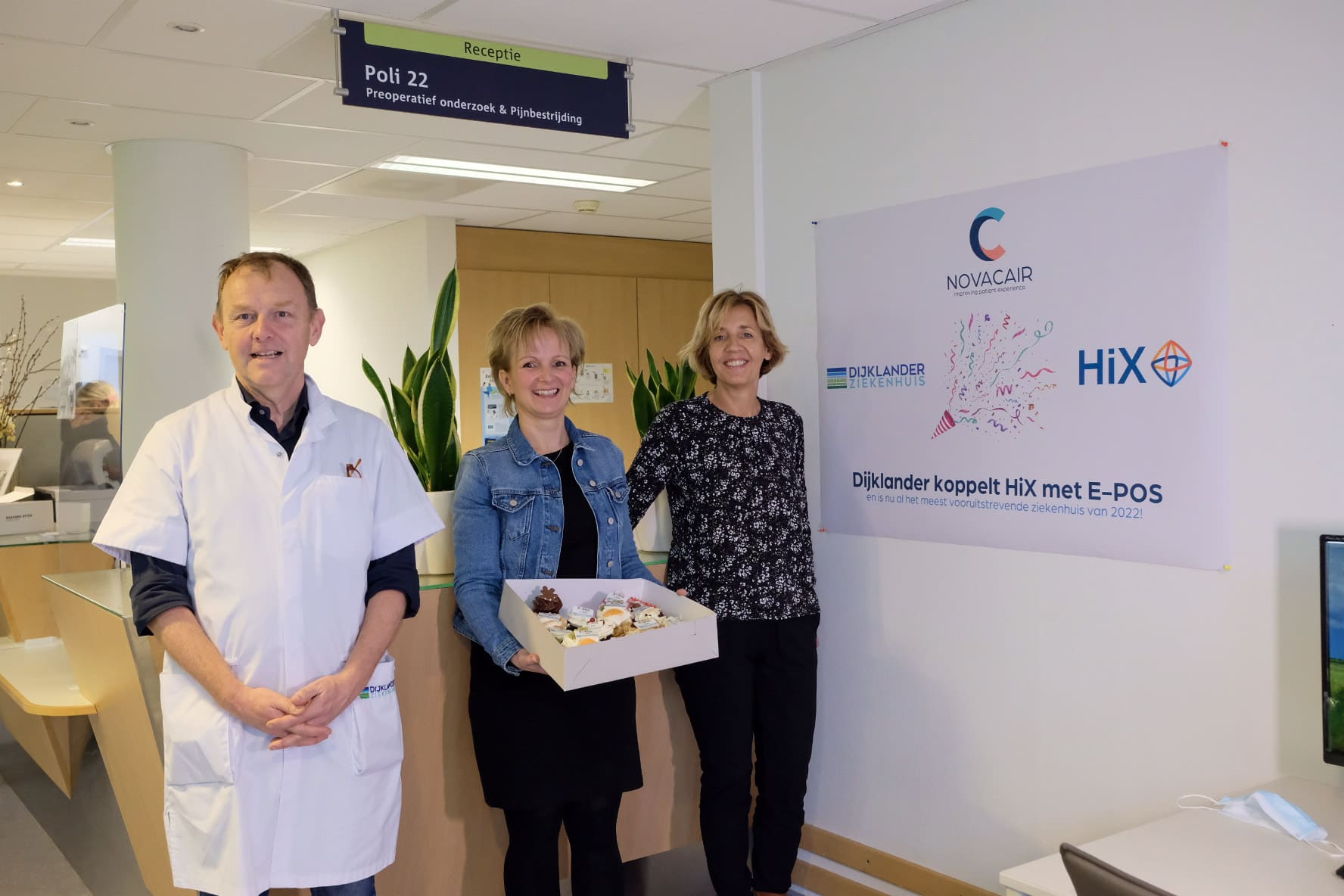The Annatommie MC
An anesthesiological precursor.
- Client name: Maveland Inc.
- Project name: Maveland Inc.
Textbook example of sensible care
Fewer outpatient visits, more freedom and control for the patient and tailored information. Despite a few hurdles, the Dijklander Hospital looks back with satisfaction at working with the digital preoperative screening tool E-POS.
Dijklander Hospital launched its screening software in March 2020. The implementation necessarily gained momentum during the corona crisis, outpatient nurse Miranda Helmers tells NVZ's podcast.
Thanks to E-POS , patients no longer have to make visits to the outpatient clinic to fill out a paper questionnaire. Preparing for surgery can now be done from home through a digital screening. First, patients go through a two-step verification linked to their e-mail address and phone number. After verification, they can complete the digital questionnaire.
Triage system
Based on the answers, an advisory document is automatically generated based on international guidelines. In addition, the software includes a triage system. This advises whether the patient is suitable for digital clearance, needs to be called by the doctor or needs to come to the hospital. Furthermore, the patient receives several instructional videos explaining the surgery, anesthesia options, possible complications and lifestyle advice.
Deciding better
The arrival of E-POS has significantly reduced patient flow at the outpatient clinic. 'It is the textbook example of sensible care,' says anesthesiologist John van Roy. For example, patients no longer have to come to the hospital unnecessarily and it gives them the freedom to complete the questionnaire at their own time. The patient also has more control and can better decide on anesthesia techniques. 'The specialist gains more insight into the patient's state of health through E-POS . Digital triage allows the specialist to pay attention to the patients who really need it.'
Opinion
For hospitals that want to get started with digital preoperative screening, anesthesiologist Van Roy has the following advice. 'Look carefully at the local situation and the information process. If you notice that the current process is laborious, you will immediately benefit from introducing digital screening.' In addition, a different mindset is required. 'Within the hospital, you have to make arrangements and decide that you don't have some patients in the outpatient clinic before surgery.'
In addition, start linking E-POS and the EPR early to avoid unnecessary overtyping for the outpatient assistant. 'That makes embedding the patient flow easier,' Van Roy said. 'Above all, ensure that all specialties are well informed and trained in the modules before implementation,' Helmers adds.
E-POS directly in HiX
The use of E-POS proved to be of great value after the start-up phase. As a result, the preoperative outpatient clinic staff decided on high exception to work with two systems during 2020 and 2021; HiX for administration and E-POS for preoperative questionnaires.
In order to optimally facilitate the employees of the Dijklander Hospital, the IT department of the Dijklander together with NovaCair, the company behind E-POS, decided to create a link with the EPD. After inventory, development and an extensive test period, the Dijklander Hospital was the first hospital to succeed in automating pre-operative screening integrated into HiX.
The integration between HiX and E-POS uses care platform, Chipsoft's cloud service. When a surgery order is created, E-POS is started and the patient receives a digital questionnaire. This questionnaire can be completed almost immediately by the patient. Once the data are received, the health report and medical advice become visible in HiX after which the anesthesiologist can immediately initiate the appropriate follow-up actions. In this way, the Dijklander uses the advantages of E-POS and the registration burden is further reduced.
Because the integration is built on Chipsoft's Care Platform, thanks in part to the efforts of the Dijklander Hospital, the link is generically available to other Chipsoft customers. This makes it possible for other hospitals to achieve the same efficiency without much IT time and without loss of patient safety.







